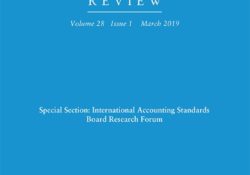eric.ed.gov har udgivet: The teaching of mathematics, which arguably is so abstract as to transcend place and community and even culture (according at least to a Platonic view of mathematics), will seem to some observers particularly ill-suited to instruction in place- or community- or culture-based approaches. Nevertheless, current thinking in mathematics education, with its emphasis on the construction of meaning and the application of problem solving to “real-world” situations, might logically be interpreted as supporting these varied approaches to instruction. Because both rural education and math education scholars collaborated in conducting this study, the project did indeed have its eye as much on the “community purposes of mathematics instruction” as on the “mathematical purposes of community engagement”. The related complexities are legion–and, the authors find, them interesting. This report begins… Continue Reading →
Like this:
Like Loading...

tandfonline.com har udgivet en rapport under søgningen “Teacher Education Mathematics”: Abstract Insights and technologies from neuroscience research can help accounting scholars more deeply understand how decision-makers physically and cognitively process and react to accounting information and controls. We conduct a systematic review of accounting literature to evaluate whether and how accounting scholars are incorporating neuroscience research into their work and building a field of ‘neuroaccounting.’ To do so, we identify literature that relates accounting research questions to neuroscience research, addresses accounting questions or tasks but has implications for neuroscience or neuroaccounting research, or investigates accounting questions using neuroscience technologies. We then classify that literature into two broad topic areas analogous to the decision-facilitating (how individuals process information) and decision-influencing (how individuals respond to controls) roles of accounting, and map relationships… Continue Reading →
Like this:
Like Loading...
eric.ed.gov har udgivet: A challenge for contemporary rural educators (especially teachers) is how to imagine rural education in a way that is not entirely focused on defining the rural as a problems space or as something simultaneously left behind by history and outmigration. Problems of community economic development come into the picture when we attempt to imagine rural schools that support and contribute to their communities rather than mostly serving as way-stations for outward bound youth. These are the kinds of questions raised by the ACCLAIM project, organized by the University of Tennessee Knoxville, Ohio University, West Virginia University, the University of Louisville, and the University of Kentucky. ACCLAIM is doing ground-breaking work in the United States simply by asking a number of key questions about the relationship between math… Continue Reading →
Like this:
Like Loading...
tandfonline.com har udgivet en rapport under søgningen “Teacher Education Mathematics”: Link til kilde
Like this:
Like Loading...
eric.ed.gov har udgivet: The research aims to reveal the specific way to evaluate learning mathematics, so that we get the “measuring tool” for the achievement of learners in mathematics that reflect their level of understanding by score (mark), which we trust it with high degree. The behavior of the learner can be measured by a professional way to build the test, through a sequence of steps that make the mark obtained has full confidence, and reflect the real level of the learner. Link til kilde
Like this:
Like Loading...

